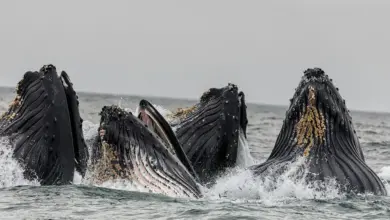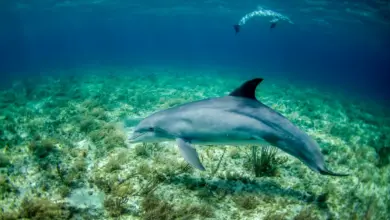Some of the nearly 50 species of whales are the largest in size of any animals that have ever lived on earth—and that includes the dinosaurs. Blue whales, the largest of the large, can grow to the length of 115 feet (35 meters), and weigh as much as 135 tons. However, some kinds of whales remain relatively small—the dwarf pygmy sperm whale, for instance, grows no longer than 2.7 meters, or about 11 feet.
[ez-toc]

One whale, the northern right whale is still one of the most endangered animals on the planet, with only a few hundred remaining. However, most whale species have recovered fairly well under international legal protections that banned whaling after poorly regulated whale hunting in the 1800s and early 1900s drove many kinds of whales to the edge of extinction.
The biggest whales are baleen whales, which means that they screen the water from their food, consisting of large amounts of very tiny shrimp and other small sea creatures, through their baleen, which is a sieve-like structure in the whale’s mouth. Baleen whales include blue whales, right whales, humpback whales, and bowhead whales, and these were among the most intensively hunted species during whaling times. However, sperm whales, which have teeth and catch larger prey such as squid, and are therefore not baleen whales, were also hunted mercilessly by the whalers.
The killer whale technically is not a whale at all, but a dolphin.
Many kinds of whales travel thousands of miles during the course of a year, migrating from feeding grounds to breeding grounds, and back.
Want to learn more about whale reproduction? Read: Whale Reproduction



